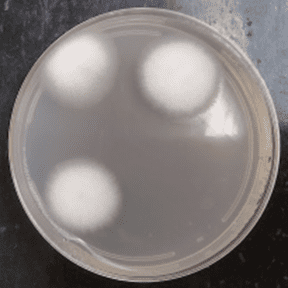
Get A Testing Quote
Fusarium keratoplasticum
STRUCTURE AND PHYSIOLOGY
F. keratoplasticum is a filamentous fungi. Research has indicated that the hyphae and chlamydospores of F. keratoplasticum can produce melanin in-vitro and the hyphae can produce pigment in-vivo.
TRANSMISSION AND DISEASE
F. keratoplasticum can cause a broad spectrum of infections based on how the fungi are introduced to the host. The infections in non-immunocompromised people tend to be non-threatening and localized, whilst in immunocompromised people, the infection can lead to death.
DISINFECTION
Species of the Fusarium genus can create biofilms, which can make them more challenging to disinfect.
NOTES
The Fusarium genus shows resistance to most antifungal agents, which can make it difficult to treat. F. keratoplasticum is also the most common biofilm found in plumbing.
REFERENCE(S)
Nucci, Marcio, and Elias Anaissie. “Fusarium infections in immunocompromised patients.” Clinical microbiology reviews vol. 20,4 (2007): 695-704, doi:10.1128/CMR.00014-0
Chiewchanvit, S., Chongkae, S., Mahanupab, P. et al. Melanization of Fusarium with Acute Leukemia. Mycopathologia 182, 879–885 (2017).
Sav, Hafize et al. “Biofilm Formation and Resistance to Fungicides in Clinically Relevant Members of the Fungal Genus Fusarium.” Journal of fungi (Basel, Switzerland) vol. 4,1 16. 23 Jan. 2018 , doi:10.3390/jof4010016
Short, D.P., O’Donnell, K. & Geiser, D.M. Clonality, recombination, and hybridization in the plumbing-inhabiting human pathogen Fusarium keratoplasticuminferred from multilocus sequence typing. BMC Evol Biol 14, 91 (2014). https://bmcecolevol.biomedcentral.com/articles/10.1186/1471-2148-14-91
Share

